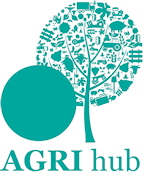Dairy farm profits are set to drop rapidly in the coming year, and businesses will need to adapt quickly to manage input costs and cash flow over the winter.
Higher yielding, year-round calving herds made the most of last year’s high milk prices, by investing in feed to maximise production, according to the Milk Cost of Production report by Old Mill and the Farm Consultancy Group (FCG). But that means they need to act equally quickly to reduce their costs as circumstances have reversed and milk prices have plummeted.
The report, which was unveiled at the Dairy Show, is based on dairy clients with a 31 March year-end. It shows that average profits increased by 146% between 2021/22 and 2022/23, to £914/cow. This was due to a 56% increase in milk income per cow (given both higher yields and milk prices) and increased non-milk income (like calf and heifer sales). Combined, that more than offset the steeply higher input costs, which rose from £2,300/cow to £3,182/cow. The figures don’t include rent, interest, drawings, tax, capital expenditure or basic payments, and include a labour charge of £30,000 per full-time partner or director.
“Looking back over a five-year period, the year to 31 March 2023 is the only year where milk income alone has comfortably covered the cost of production,” says Dan Heal, rural accountant at Old Mill. “This is a clear signal of supply and demand being out of balance. But summer 2023 has taken a very different path, with milk prices falling quickly, and some costs remaining stubbornly high.”
That volatility is set to continue – and there will be some losses made in the short-term. However, efficient producers will continue to make a living in the longer term – although they should beware large tax bills in January 2024 when some of the lowest milk prices of the past 18 months will be paid, warns Annabel Hole, rural administrator at FCG. Many producers invested surplus cash in property repairs and other assets – but it was also important to reduce debt ahead of tighter times.
“Though costs are falling, the cost base is still 30% higher than two years ago due to electricity costs doubling, feed still being 40% higher and most fertiliser having been bought forward at double current market prices.”
Profits are forecast to drop back to £415/cow in 2023/24, due to high costs and reduced income. “With interest rates 5%+ higher, basic payments declining, and extra investment required to comply with water and environmental regulations, there is a cash squeeze looming,” she says. “Mistakes in the next 12 months will be punished severely, financially.”
The gap between the top and bottom 10% of herds continues to widen, with the former making £1,668/cow profit versus the latter at £187/cow. “Larger, higher yielding herds were more suited to the market conditions of 2022/23,” explains Mr Heal. “These systems typically perform well in times of high prices, although have high cost bases for when prices fall.”
And there are some common themes among the best performing herds: They benchmark their costs of production, are involved in discussion groups, are willing to change, and plan and budget ahead. The type of system is irrelevant, as there is a mix of both in top and bottom 10% of herds, he adds. “Farming efficiently relies on the farmer and is not based on the system which is run. We’re confident that producers who manage their businesses effectively will be able to weather the more difficult periods as well as take advantage in the good times.”
- For more information contact Dan Heal on 07970 890772 or visit the Old Mill stand at the Dairy Show.
About Old Mill
Old Mill Accountants and Financial Planners employ over 300 staff in four West Country locations. The Rural Services teams are headed by Andrew Vickery, with offices in Yeovil, Wells, Exeter and Melksham. Looking after over 1,200 farmers they are one of the leading specialist farm accountants, and are happy to help with any financial and tax-related enquiries from the media.






